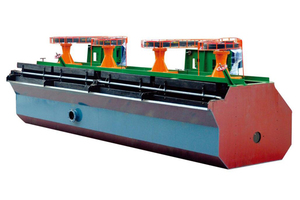-
 Encontrar enMiembros
Encontrar enMiembros Encontrar enVideos
Encontrar enVideos Encontrar enCanales
Encontrar enCanales
This website uses cookies to ensure you get the best experience on our website.
To learn more about our privacy policy haga clic aquíPreferencia de privacidad
- Etiquetas - #Flotation Equipment #Mixing Equipment
-
- Última actualización 28 de agosto de 2018 0 comentarios, 542 vistas, 0 likes
- Huzhou, 浙江省中国 - Obtener las direcciones
More from tank mixing
More in Politics
Related Blogs
Archivo
The Use Process of Flotation Equipment
Cuerpo
Flotation Equipment types vary widely also, but are all very similar, in that they introduce air underwater, and disperse it into the cell. Some use blowers, air compressors, or the action of the flotation impeller creating a void beneath it and drawing air into the machine, via the standpipe which also houses the impeller shaft. It is in the details of the method of introducing the chemicals, air and minerals in the water that makes them different.
Generally, flotation is considered to consist of three major subprocesses, namely, the collision, attachment and detachment. The collision involves the approach of a particle to an air bubble in the field of flow. The collision sub-process is governed by the liquid flow and the relative motion between bubbles and particles in a flotation cell.
Ideally, reagents will be added to a conditioning tank, with a agitator, prior to going to the Flotation Equipment, but in many cases, they are simply added to the feed, before it enters the cell, relying on the cell kinetics and the impellers to mix.
The ore needs to be suitably ground to a particle size to liberate the minerals, usually 100 mesh or finer (150 microns). Then it is mixed with water to a ideal percent solids (typically from 5% to 20%), which will yield the best recovery of the minerals. This is determined in the laboratory batch flotation cells, running a number of tests to determine each determinant of the process.
During the flotation process, frothers help create the ideal hydrodynamic conditions (such as bubble size and gas holdup) required within the pulp in the flotation cell. They generate froth that is stable enough to hold collected minerals on top of the pulp, mobile enough for removal, and decays quickly to assist with downstream operations. These characteristics play an important role in the kinetic viability of the flotation process as well as the overall grade and recovery that can be realized from the flotation cell or circuit.
Many industrial processes, at some stage, generate or utilize fine particles ranging in size from over 100 μm to less than 1 μm. This is usually the case in mineral processing. Ultra-fine particulate matter, however, exists in water and wastewater, too, needing removal before it is made potable or is dischargedlooking for sustainability. The availability of an effective separation technology is essential, because of the impact on downstream operations and product quality. Flotation, therefore, is one of the processes available for the separation of particulate matter from dispersions.
You can click Mixing Equipment for more information.
Fotos
Mapa
-
Ubicaciones en MyWorldGo
Información sobre la ubicación
- Ubicación: Huzhou, 浙江省中国 - Obtener las direcciones
- Dirección formateada: 中国浙江省湖州市
- Dirección: 湖州市
- Estado: 浙江省
- País: 中国









Comentarios